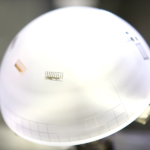

As humanity’s race to explore outer space continues on its imminent path, the importance of 3D design and 3D printing for these space-based applications becomes more and more apparent. Take NASA for instance, which has been working to develop a number of innovative 3D printing technologies, including a multi-armed 3D printing space robot named Archinaut, aerosol jetting technology for 3D printed electronic assemblies, and even an entirely new technique called Selective Separation Sintering, which was developed as a submission for last year’s In-Situ Materials Challenge. In fact, these outer space-based challenges, which have been hosted by the likes of NASA, Future Engineers, and Made In Space, have led to innovations of all shapes and sizes.
Whether it’s a simple design challenge to 3D print a new logo for NASA or creating a useful tool for production by the International Space Station’s 3D printer, these various space-based competitions help educate young engineers and innovate upon the world’s space exploration industry. Now, the electronics distribution company Mouser Electronics and renowned American engineer Grant Imahara are collaborating to launch the ISS Design Challenge, yet another competition that will call on college students and engineers to create a 3D printable electronic object that can be printed and utilized by astronauts aboard the ISS.
The ISS Design Challenge is the latest series from Mouser Electronics’ Empowering Innovation Together program, which was launched in accordance with the opening of their Innovation Lab, a hub for various design and engineering challenges. This particular competition will be co-sponsored by two of Mouser’s top suppliers, Amphenol and Intel, and will be judged by Grant Imahara and Chris Hadfield, a former commander of the ISS. In addition, Mouser has also partnered with the Institute of Electrical and Electronics Engineers (IEEE), Made In Space, Hackster, and MacroFab for the latest challenge.

Essentially, Mouser is searching for college engineering students and young professional engineers to create an innovative design idea that can be printed and used by the team of astronaut on the ISS. Those who feel capable of undertaking this mission must include an image of the design, a schematic of the electrical for the design, as well as a Bill of Materials and PCB fabrication files (STL files are a plus, but not required). The ISS Design Challenge also requires participants to write a short essay on their design idea, and why it will benefit those astronauts residing aboard the ISS.
The selected grand prize winners of the challenge will receive a 3D printer, the brand of which has yet to be revealed, as well as a consultation with the organization Made In Space, the pioneers of implementing additive manufacturing into the environment of outer space. Second and third place will receive a Fluke Meter, which is a device that combines several electronic measurement functions into one unit. Submissions for the ISS Design Challenge will be accepted until October 7, 2016, so if you think you have what it takes to design an electronic object for the ISS to use in outer space, join in on Mouser Electronics and Grant Imahara’s latest space-driven contest. Discuss further in the ISS 3D Design Challenge forum over at 3DPB.com.
[Source: Mouser Electronics]
If you're looking to get architectural 3D animation in the USA, our service provides an exceptional way to bring your architectural concepts to life through dynamic, immersive visuals. Through our platform, you can easily request high-quality 3D animations that showcase your designs in motion, offering a detailed view of your project from multiple angles and perspectives. Whether it's for a real estate development, a commercial building, or an urban planning project, our expert team ensures that every detail is captured in a visually compelling animation.
Through our website, you can seamlessly get architectural 3D animation tailored to your project’s specific needs. With our help, you can offer potential clients or investors an engaging experience that goes beyond static images. By integrating CGI animations with real-world settings, lighting, and textures, our team creates a lifelike experience that allows your audience to interact with your project as though it were already built. This service is perfect for presenting complex designs in a clear, visually attractive way that stands out in the competitive architectural market.




